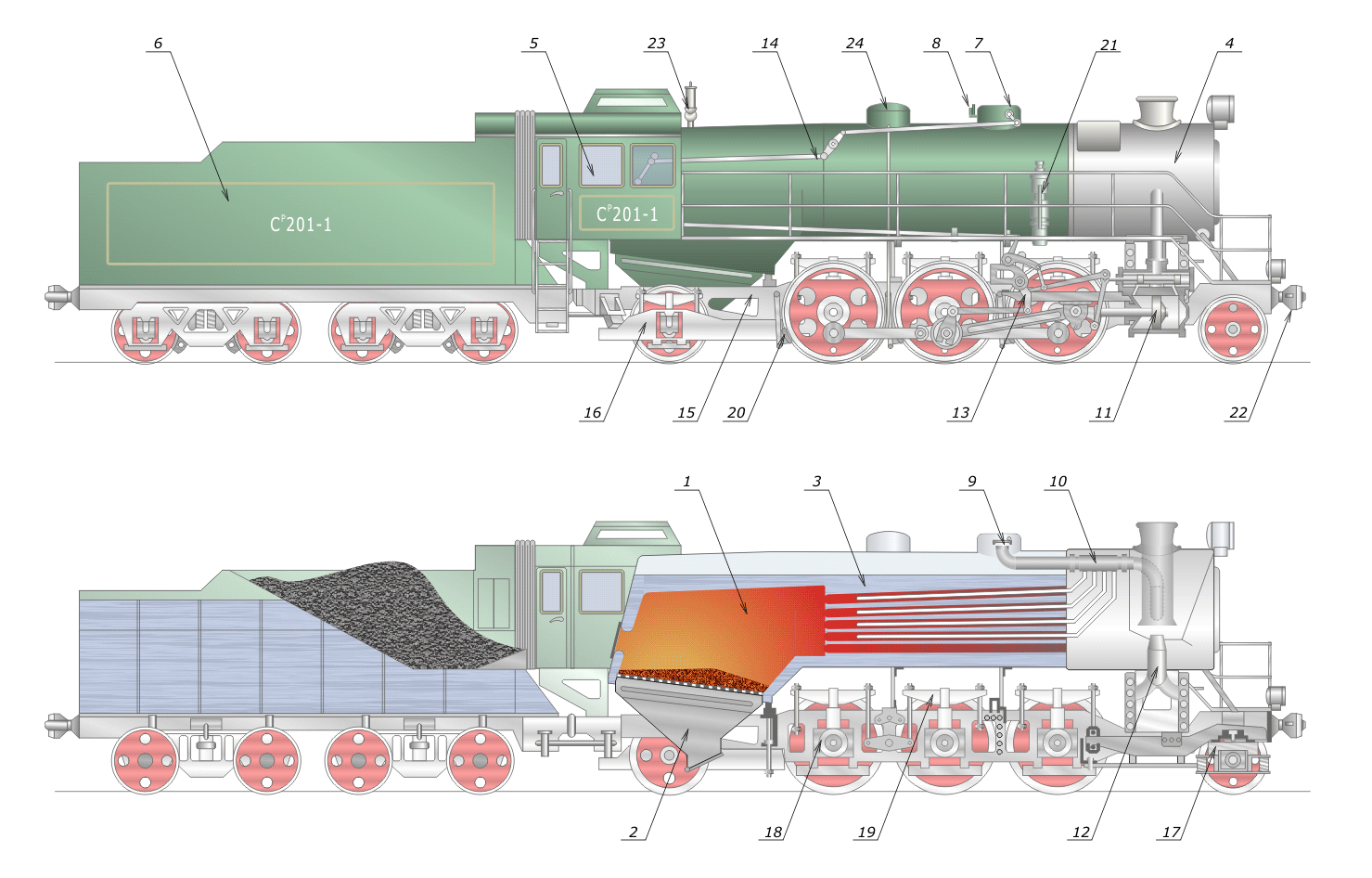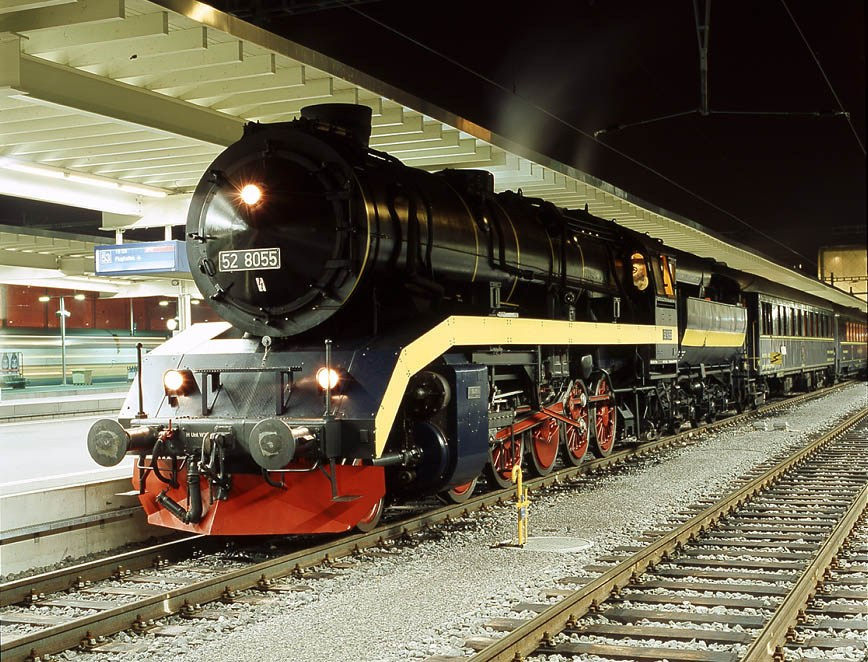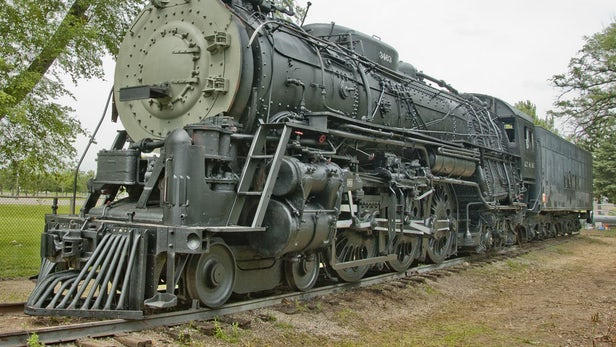Unforgettable technologies: steam locomotives

There are many technologies that we usually associate with the past and even with the century before last, but, nevertheless, still used in life. Some of them are of historical interest only, others are still widely used, but soon they will finally give way to their modern counterparts, while others are firmly established in their narrow niche and are not going to give up their positions. Most of these technologies are uneconomical and difficult to use - this is their weakness. But they also have strengths: it is internal simplicity, ease of manufacture and independence from the modern energy and information infrastructure.
At first glance, they may not seem very important to you. But this is a misconception. We just lost the habit of global catastrophes - the twentieth century was marked by a surprisingly peaceful behavior of nature. In our time, a solar storm, similar to the storm of 1859, would have disrupted power lines and communications for years.
')
But even if they would not have any advantages at all, they would still need to be preserved, at least for historical and aesthetic reasons. The past does not disappear - it lives next to us, and in its interweaving with the future our present is born.
One of these technologies is the steam engine, and its most prominent embodiment is the steam locomotive. About him and will be discussed.
Here I will not dwell in detail on the internal structure of locomotives, instead of which I will place the general scheme. Interested readers will find more complete information in Wikipedia.

The principal structural diagram of a locomotive: 1 - firebox; 2 - ashpit; 3 - steam boiler; 4 - smoke box; 5 - booth; 6 - tender; 7 - dry steam; 8 - safety valve; 9 - regulator valve; 10 - steam superheater; 11 - steam engine; 12 - cone; 13 - steam distribution mechanism; 14 - regulator drive; 15 - crew; 16 - support trolley; 17 - runner cart; 18 - bush; 19 - spring suspension; 20 - brake pad; 21 - vapor pump; 22 - the coupling device; 23 - whistle; 24 - sandbox.
By the middle of the century, of course, there were no stokers any more: locomotives used automatic supply of coal or other solid fuel using an elevator mechanism. In the case of using more efficient liquid fuel, nozzles were installed in the firebox, and instead of the grates, a brick vault was placed, which, on contact with which, the sprayed fuel ignited.
In dry regions, steam locomotives used a special system for condensing steam, which allowed them to save scarce water.
Brief history of steam locomotives

The first in the world locomotive traveled in Wales on February 21, 1804, the first railway was laid in 1825, the rise of locomotives fell in the middle of the nineteenth - the beginning of the twentieth century, and already in the thirties, they began to actively replace the recently appeared much more economical locomotives and electric locomotives. However, the locomotives continued to be built until the fifties - sixties, and were finally replaced only by the eighties of the twentieth century.
In different countries, the end of the era of locomotives fell at different times, but the main change did occur in the sixties. In the US, steam locomotives began to be massively replaced as early as the fifties, and the last passenger locomotive train passed in 1961. In Europe, the process was somewhat delayed - the locomotives were replaced in the seventies. In Russia, some passenger and cargo lines used steam locomotives until the late eighties - early nineties. In many African and Asian countries, steam locomotives were used until the end of the twentieth century. In particular, in South Africa, the last commercial lines were closed in 1994, in India - in 2000, and in China, the use of locomotives on freight trains was officially discontinued only in 2005.
Locomotives in the XXI century

Thus, the era of regular use of steam locomotives for the commercial transportation of passengers and goods passed, and their new life began. Why are they needed in the XXI century?
First , for tourist and historical purposes. There are several hundreds of cultural and historical lines in the world. Not all of them use steam locomotives, but the first models of heat and electric locomotives are of no less interest to passengers accustomed to high-speed modern express trains.
Secondly , in the cinema. Every year new historical films are shot, in which the locomotives are directly involved.
And thirdly , just in case. For example, such as the global fuel crisis, a major technological or natural disaster. At the same time, locomotives show many advantages over modern machines.
- The simplicity of the design. The simplest locomotive is much easier to design than any other similar machine.
- Ease of maintenance. You need to take care of any machine, but in general, locomotives are less problematic in care than their more modern counterparts.
- Omnivorous. The locomotives drive on everything that burns: coal, firewood, diesel fuel, garbage and so on.
Strangely enough, the most active steam locomotives remained in progressive Europe. For example, in the UK alone, several hundred steam locomotives are operated, and suburban line operators are actively using them to attract tourists.
In Russia, about a thousand steam locomotives were mothballed and stored as a national reserve. Some of them can be seen in museums, while others, apparently, are not used at all.
New steam locomotives
Until now, it was a question of serial steam locomotives produced during the period of their mass exploitation, but many will be surprised to learn that new steam locomotives continue to be designed and manufactured in the 21st century. It is finished a little from them - about seven, and a couple more tens in the assembly. These locomotives are divided into two groups:
- Replicas of old models, recreated using new technologies. With them, more and less simple. They are a historical reconstruction.
- New locomotives, specially designed from scratch and capable of competing with modern heat and electric locomotives. In the best current locomotives, the efficiency is not more than 14%, but in the planned various improvements would allow a value of about 25%! What would bring the engine in terms of efficiency to a diesel engine. They even came up with a special name - Advanced steam technology . Why not? Usually, interest in them increases during the next fuel crisis. The beginning of the 21st century was marked by record prices for oil and gas. After their sharp fall, many interesting projects were, alas, frozen.
LNER Peppercorn Class A1 60163 Tornado


One of the most famous representatives of the last group LNER Peppercorn Class A1 60163 Tornado - the first locomotive built in the UK since the 60s. It is an evolution of the LNER Peppercorn Class A1 series, produced in the UK in the 60s. Locomotive built the whole world using the latest technology. Finished in 2008.
No. 52 8055

No. 52 8055 - a replica of one of the last German locomotives. The DLM company finished it in 2009, and the steam beauty has been running around Switzerland for a long time.
The 5AT

The 5AT is another interesting project supervised by the 5AT Group, after its collapse in 2012 it was frozen. In 2012, a new group, The Advanced Steam Traction Group , was created to continue it.
The ACE 3000

The ACE 3000 - was proposed by Ross Rowland during the oil crisis of the 1970s. It had to look like diesel, and was designed to compete with modern diesel locomotives, using coal, the former being much cheaper than oil at that time. ACE 3000 included many new technologies, such as automatic control of fire and water level. The locomotive could be connected to a diesel unit and work in tandem with it. ACE 3000 was one of the most publicized attempts to create a modern steam locomotive, but the project ultimately failed due to lack of funding. Well, how else?
The CSR Project 130

The CSR Project 130 is a modern steam locomotive (based on an ATSF 3460 class steam engine) capable of high-speed passenger traffic at a speed exceeding 100 miles per hour and successfully overclocked to 130 miles per hour (hence the name Project 130). It is assumed that it will be environmentally friendly, since it will work on biomass in the form of solid fuel (unlike all other modern structures that require liquid fuel). He collaborates with the Institute for the Environment (IonE) at the University of Minnesota and Sustainable Rail International , a non-profit organization of railway experts and engineers.
Solar steam train
The Solar Steam Train is a fireless steam locomotive that uses pre-heated superheated steam. Alas, except for the mention, I did not find any information on it.
Locomotives and nature conservation
Suddenly, locomotives found an equally important advantage that could cover many of their drawbacks - they turned out to be more environmentally friendly! Indeed, all modern ICEs are based on the use of a microexplosion, which, in addition to carbon dioxide, forms very poisonous carbon monoxide and nitrogen oxides. Steam machines use continuous combustion at a lower temperature and are free from such problems.
So, quite possibly, we will see a new era of steam locomotives!
Links
Steam locomotive - Wikipedia
Advanced steam technology - Wikipedia
Steam locomotives of the 21st century - Wikipedia
International Steam Locomotives 2017
Source: https://habr.com/ru/post/233931/
All Articles